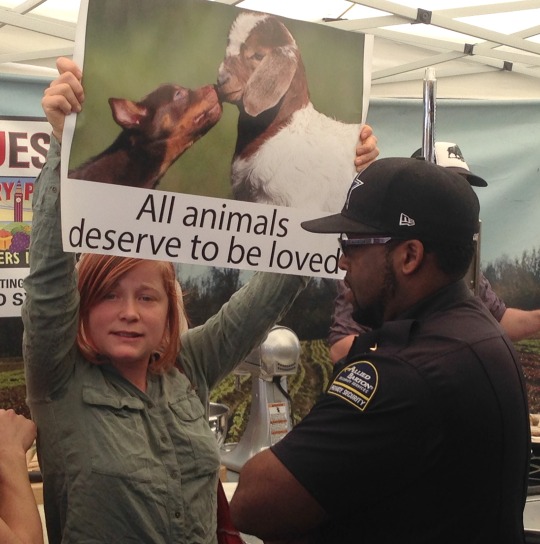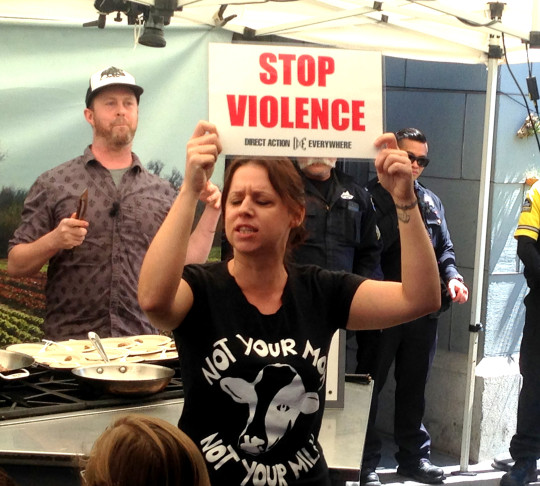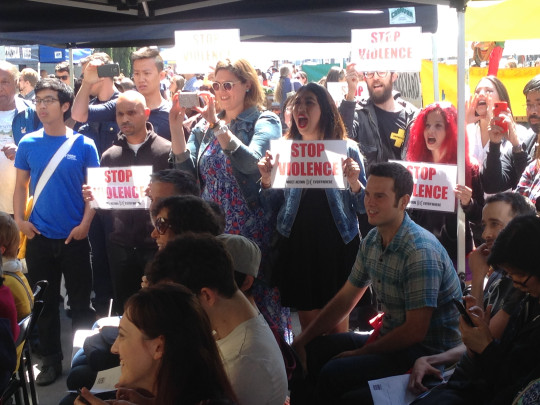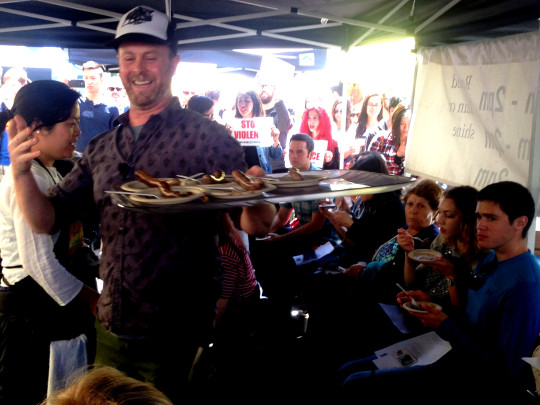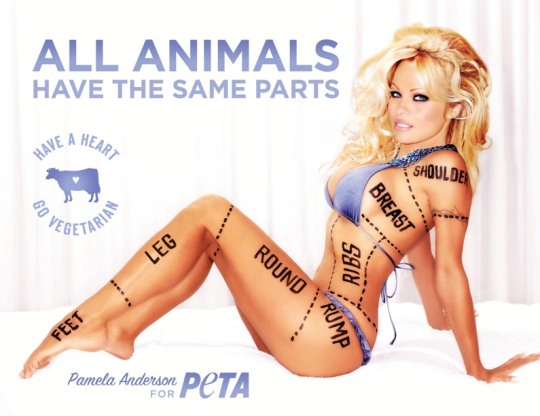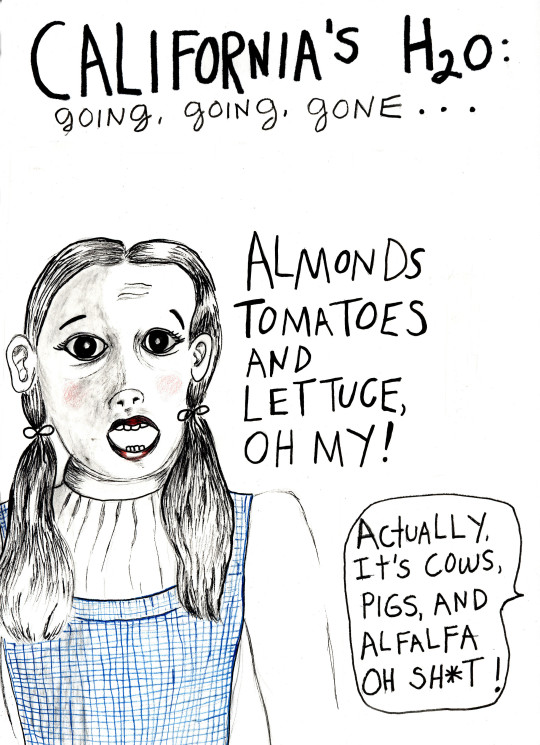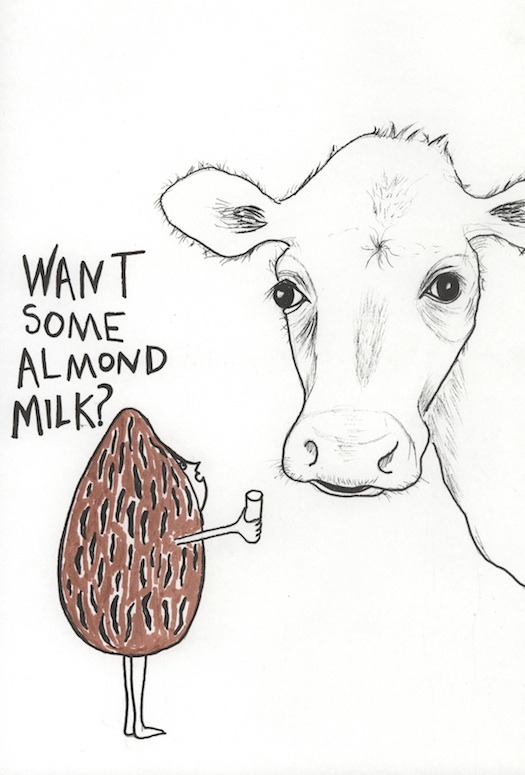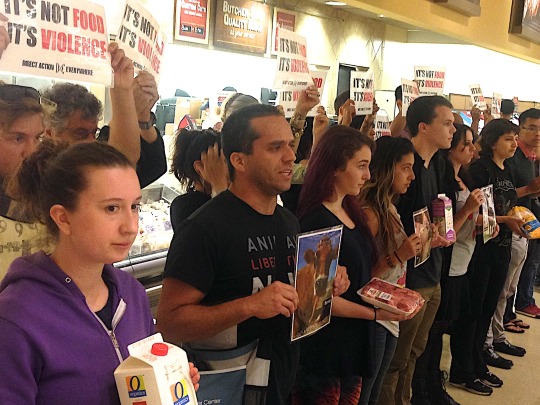
By Leslie Goldberg
I’ve never yelled inside a Whole Foods Market or in a Safeway or in any grocery store. I’ve never even wanted to. When I’ve walked past (quickly) the neon-lit graveyards they have in the back of these stores, which showcase the dead animals or their chopped-up flesh, I’ve felt a grief and revulsion that makes me quiet.
Yet despite my despair at the obvious animal cruelty that’s taken place, I have to admit I’ve always kind of liked Whole Foods. I like that they have a gazillion different plant-based milks (that taste good); that they have a pretty good bulk section; that the employees are nice; that one of the store’s founders, John Mackey, was persuaded to become a vegan; and I always liked that the checkers would ask me, “Credit or donation?” when I brought in my own bag. I’d get a little warm feeling when I’d say, “donation.”
Yet there I was – pissed and yelling my head off with the other protestors in the meat department of Whole Foods on Sunday: “It’s Not Food, It’s Violence.”
I joined a group of Direct Action Everywhere (DXE) members to protest Whole Food’s truly bizarre, if not Orwellian, $20 million ad campaign: “Values Matter.” The ads feature such slogans as “Know What Kind of Life Your Dinner Lived” or “Choose a Fish, Cook a Fish, Save a Fish.”
Welcome to the house of mirrors world of “humane meat.” Or “sustainable agriculture.” Or “cage free.” Or “cruelty-free food.” Or “grass-fed.” It’s a wonderful dreamy world where the environment is pristine: no water pollution, no climate change, no destruction of wildlife. You can still kill and eat animals and/or consume their secretions and feel good about it. Hell, you can eat animals and save animals at the same time!
Ask most people to envision a “cage free” egg farm and they will tell you about open green pastures with chickens playing and frolicking in the warm sunlight. I once heard a natural foods co-op customer describe it as “like summer camp.” And if you can’t imagine a summer camp for so-called food animals, Whole Foods has a picture of one of these places on their website.
It just ain’t so, folks.
Cage free is just that: cage free. OK, farmers aren’t cutting off a chunk of chickens’ beaks and stuffing the birds into cages so small they can’t move. Instead they’re cutting off a chunk of their beaks and stuffing them into darkened sheds encrusted with feces, filth and dead body parts. These places are so crowded the chickens can barely move. Yet on the Whole Foods website, the store insists their chickens aren’t mutilated and that each and every one of them has access to the outdoors. Also Santa Claus lives at the North Pole in a house decorated with candy canes where he makes beautiful toys for all the children in the world.
Here’s an undercover video taken by DXE at one of Whole Foods’ cage free egg suppliers.
I watched it. It won’t kill you. You’ll see chickens in crowded sheds with missing feathers and with bruised, distorted bodies — chickens seeming so sick and weak they can’t even get up or open their eyes.
Ok, photos and videos can lie. Maybe you say, well, if Whole Foods can create a fantasy world with pictures, why can’t animal rights activists create another fantasy world with pictures?
You might say, what if Whole Foods is actually a non-profit organization devoted to bringing healthful foods to The People and really makes sure its farmed animals are loved and cared for? And what if the grocery chain hires multitudes of employees, gives them a living wage and health insurance and asks them to gently put these cared-for animals to sleep after they’ve lived long and happy lives?
Truth alert: Whole Foods is a for-profit company that answers to its shareholders. If they can make money selling junk food, they do it. If they can make money selling animal body parts and animal secretions they do that too.
Nobody puts these so-called food animals “to sleep,” otherwise the eaters of such animals would also get “put to sleep.” They don’t live long and happily – that costs too much. No, as soon as these “humanely-raised” animals reach “market weight,” they’re killed in slaughterhouses, same as any other “food animal.” It’s terrifying and excruciating for all. “Grass-fed” beef cows are killed. “Free-range” turkeys are killed. “Humanely raised” ducks are killed. “Sustainable” goats are killed. “Organic” rabbits are killed. Monterey Bay Aquarium-approved fish are killed. “Cage free” laying hens are killed. “Happy” dairy cows are killed. There’s no retirement farm for dairy cows or laying hens. Dairy cows become hamburger and the chickens often become fertilizer or even animal feed as soon as they stop producing.
It’s an outrage that Whole Foods would rip off the Black Lives Matter slogan and use it to sell animal suffering to people who are concerned about farm animals. I truly believe those customers do care about animals. Plus, why would anyone give all that extra money to the shareholders of Whole Foods if they didn’t care?
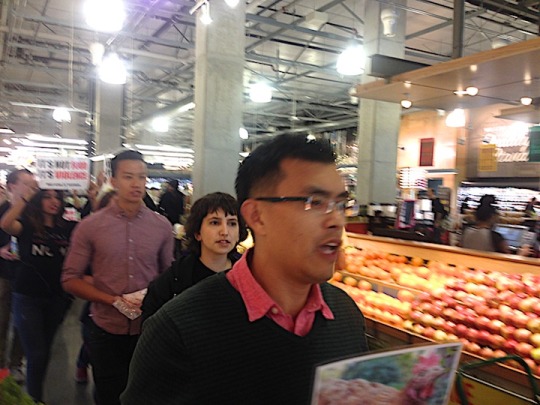
About 30 or 40 of us walked into a Whole Foods Market in San Francisco from a nearby park where we’d all met up. Trying (probably unsuccessfully) to look like customers we entered the store with our “It’s Not Food, It’s Violence” signs kind of hidden under our shirts or rolled up in our hands.
For a few minutes we kept sort of trying to look like normal customers despite the fact that none of us bothered to get a cart or a basket and we were all hanging around near the meat department when we heard the voice of one of the DXE’ers, shouting “Excuse me, could I get your attention?’
That was our cue to assemble in front of the meat counter and hold high our signs while other protesters gave short speeches about the suffering of animals whose bodies were now lying dead in the glass case. One of the speakers held a carton of milk and talked of dairy calves and baby goats torn from their mothers shortly after birth so that humans could steal their milk. Another speaker spoke of a lucky goat, Domino, who had been rescued and was now able to live in safety and to love and be loved by others. She talked about how Domino was an individual, no different from anybody’s dog or cat.
Despite the stories, a woman with a shopping cart seemed irritated as she made her way to the meat counter through our crowd.
Standing there with my sign I looked down to see a galvanized steel tub filled with shaved ice and fish bodies. The fishes’ eyes stared at me. The fish were packed in the ice as if the tub was a little pond and the fish were looking up out of the water. They seemed alive, friendly and playful, decorative, even. As the protest continued, I wondered if customers just picked up the fish themselves or if they got someone from the meat counter to come around and do it for them.
I thought it might be easy for someone to forget that these fish actually suffered cruel and unnecessary deaths. These silent sentient beings who remember and have companions painfully strain to breathe for as long as a half hour after they’ve been caught in nets; or they writhe in agony as the most sensitive part of their body which is their mouth is pierced with a senseless merciless metal hook and they’re dragged out into the air to their deaths.
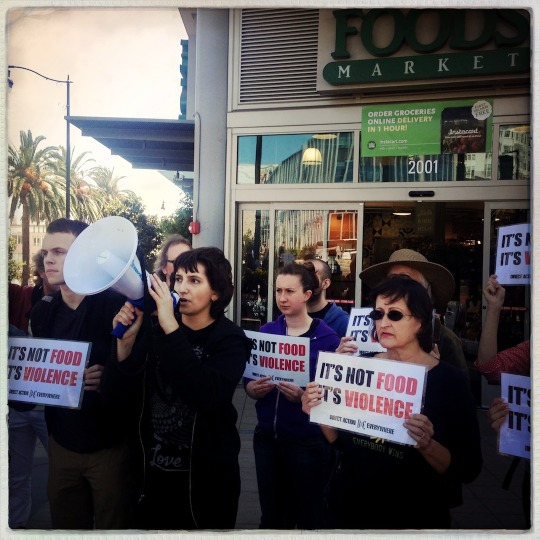
As our loud animal rights speeches continued and the Whole Foods employees looked either passive, bemused or annoyed. A lot of the customers looked the same way, but somebody in our group said she heard some customers chanting right along with us. “ANIMALS SUFFER – JUST LIKE US.” “ANIMALS FEEL PAIN – JUST LIKE US.” “ANIMALS WANT TO LIVE – JUST LIKE US.” “WHAT DO WE WANT? – ANIMAL LIBERATION.” “WHEN DO WE WANT IT? – NOW!” “WHAT DO WE WANT? – ANIMAL LIBERATION.”
We must have chanted loudly for nearly 10 minutes while the security and police officers just watched us and then, still chanting, we walked out.
Crossing San Francisco’s Market Street, we went into a Safeway store: “ANIMALS’ LIVES ARE THEIR RIGHT – WE HAVE JUST BEGUN TO FIGHT.”
– A Vicious Vegan blog post –

